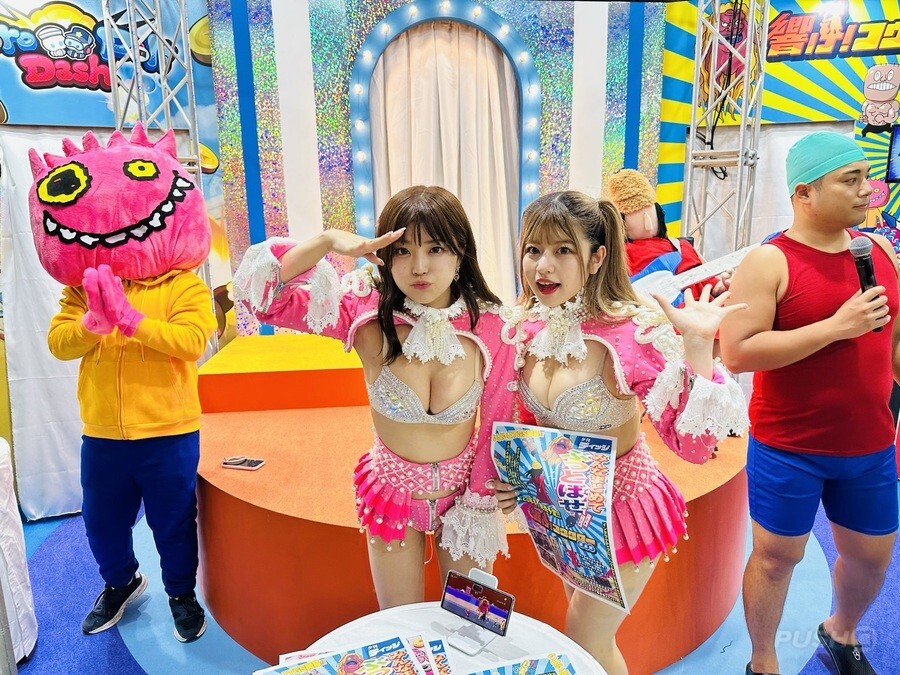Perhaps my biggest initial takeaway upon first exploration was that, despite the complete absence of Sony, Microsoft, and – perhaps crucially – Nintendo, the Japanese games industry seemed vibrant. Stalwarts like Konami, Capcom, SEGA, and Square Enix all had powerful presences, with gigantic booths populated by numerous console stations, huge television screens, and large speakers. Some even had their own stage shows, including one Resident Evil 4 pantomime-style performance involving the Chainsaw Guy and a hapless victim.
Perhaps underlining the cultural differences between Japanese and Western conventions, attractive ladies ushered in attendees at practically every booth, many of which actively encouraged photo opportunities in order to promote their associated brands. This was consistent across both the major global console publishers, and the more Asian focused smartphone games, of which there was no shortage. Specifically, the HoYoverse booth pulled in an enormous crowd almost as soon as the doors opened, and I was also interested in checking out Bluepoch’s upcoming Reverse: 1999 – a gacha card game I’m personally really looking forward to launching later this month.
